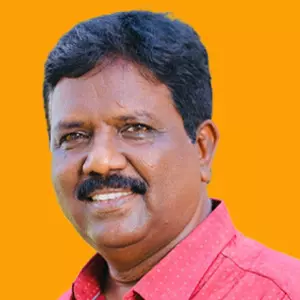
- Home
- India
- World
- Premium
- THE FEDERAL SPECIAL
- Analysis
- States
- Perspective
- Videos
- Sports
- Education
- Entertainment
- Elections
- Features
- Health
- Business
- Series
- In memoriam: Sheikh Mujibur Rahman
- Bishnoi's Men
- NEET TANGLE
- Economy Series
- Earth Day
- Kashmir’s Frozen Turbulence
- India@75
- The legend of Ramjanmabhoomi
- Liberalisation@30
- How to tame a dragon
- Celebrating biodiversity
- Farm Matters
- 50 days of solitude
- Bringing Migrants Home
- Budget 2020
- Jharkhand Votes
- The Federal Investigates
- The Federal Impact
- Vanishing Sand
- Gandhi @ 150
- Andhra Today
- Field report
- Operation Gulmarg
- Pandemic @1 Mn in India
- The Federal Year-End
- The Zero Year
- Science
- Brand studio
- Newsletter
- Elections 2024
- Events
- Home
- IndiaIndia
- World
- Analysis
- StatesStates
- PerspectivePerspective
- VideosVideos
- Sports
- Education
- Entertainment
- ElectionsElections
- Features
- Health
- BusinessBusiness
- Premium
- Loading...
Premium - Events

While 'creamy layer' principle excludes only a few individuals, subcategorisation excludes entire Dalit castes from reservation benefits, affecting more people
The BJP, wary of a backlash among Dalits following the recent Supreme Court verdict – allowing sub-classification within Scheduled Caste and Scheduled Tribe categories to provide reservation in jobs and education for the more marginalised among them – is now claiming that the “creamy layer” concept does not apply to SCs and STs. However, it supports subcategorisation within these communities.
But as the BJP is well aware, endorsing subcategorisation is essentially endorsing the creamy layer theory.
What is creamy layer?
The Supreme Court introduced the concept of the creamy layer in the Indra Sawhney case to regulate reservations for backward classes (BCs).
The idea was that among the BCs, some individuals had advanced socio-economically. These individuals, termed the creamy layer, were seen as monopolising the benefits of reservation, thereby depriving others.
The court ruled that such individuals should be excluded from the reservation benefits.
Definition of creamy layer
However, the definition of the creamy layer was not clarified in the Indra Sawhney case itself. It was later, in a 2000 judgment, that the Supreme Court provided more clarity, stating that people from BCs holding high posts like IAS, IPS or other all India services, or those who have attained significant economic and social advancement, should not be considered backward any more.
These individuals, according to the court, belong to the creamy layer and are ineligible for reservation benefits.
The judgment also included individuals with abundant agricultural land and high income within this category.
Income category factor
Interestingly, the creamy layer threshold is determined by a family’s annual income. Following the judgment that set the income limit at Rs 8 lakh per annum for the Economically Weaker Sections (EWS) among advanced castes, this same threshold was applied to the OBC category to define the creamy layer.
However, states like Tamil Nadu do not implement the creamy layer system for BCs in education or employment, rejecting the Indra Sawhney judgment.
What is subcategorisation?
Subcategorisation proposes dividing the SC list to prioritise certain castes that have not yet fully benefited from reservations.
The argument is that some SC castes have advanced more than others, monopolising the benefits of reservation, leaving other castes behind. Subcategorisation aims to address this by giving preference to certain castes in education, employment and promotion.
While the creamy layer excludes certain individuals within backward castes from reservation eligibility, subcategorisation prioritises some castes over others, effectively pushing some castes further back in the queue for reservation benefits.
A greater danger
In essence, both concepts argue that certain groups within the same list are being deprived of reservation benefits because of other groups on that same list.
The effect of both these concepts is the same: to create division and conflict among communities that should be united.
Subcategorisation is, in fact, more dangerous than the creamy layer. While the creamy layer excludes only a few individuals, subcategorisation excludes entire castes from reservation benefits, affecting a far larger number of people.
Chandrachud’s double standard
Chief Justice DY Chandrachud’s recent endorsement of subcategorisation is particularly troubling. In 2019, he and Justice UU Lalit delivered a judgment in the BK Pavitra case, stating that the inclusion of individuals in the SC/ST list is itself proof of their backwardness. Yet, the recent subcategorisation judgment contradicts this principle.
Advocate Shekhar Naphade, who appeared on behalf of the Tamil Nadu government, argued that “classification based on inter-se backwardness is in line with Article 14. This inter-se backwardness is not among individuals but among groups within the Scheduled Castes.”
If this reasoning is accepted, it could apply to all caste groups, which raises the question: What, then, is the rationale for maintaining separate lists for OBCs or MBCs? This argument aligns with the ideology of Manuvadis.
Tamil Nadu’s stance
For example, even within the seven castes of the Arunthathiyar community, there is noticeable inter-se backwardness. In the past 15 years, questions have arisen about which castes within the Arunthathiyar group have benefited the most from the 3 per cent quota.
According to the 2011 census, the total population of the Arunthathiyar subgroup is 21,50,285. This includes 10,84,162 Arunthathiyars, 7,42,597 Chakkiliyars, 2,47,454 Madaris, 58,362 Adi Andhras, 5,929 Madigas, 7,546 Pagadais, and 4,235 Thottis.
If we analyse the beneficiaries of reservation within these seven castes, we find that one or two castes have primarily benefited from the 3 per cent quota, largely due to their higher levels of education and urbanisation. However, this does not mean that these one or two castes have monopolised the 3 per cent reservation.
Advocate Naphade also argued that the Indra Sawhney judgment applies to the subclassification of Scheduled Castes. This is contradictory because, in Indra Sawhney, Justice Jeevan Reddy clearly stated that “the test or requirement of social and educational backwardness cannot be applied to Scheduled Castes and Scheduled Tribes, who indubitably fall within the expression ‘backward class of citizens.’”
It remains unclear whether the stance taken by Advocate Shekhar Naphade was officially approved by the current DMK government.
A flawed perspective
The notion that an individual’s advancement in wealth, education or employment disqualifies them from reservation ignores the reality that SC, ST and OBC communities do not receive reservations proportional to their population, and even reserved seats often remain unfilled.
Despite 75 years of Independence, many Dalits still struggle for basic rights like access to drinking water and entry into temples.
The government and judiciary are aware of this, yet they continue to impose barriers like the creamy layer and subcategorisation, inciting division within oppressed communities. This is nothing but an extension of the Varna system, aimed at keeping SCs, STs and OBCs divided and oppressed.
Illusion of progress
In India’s caste-based society, education, wealth and employment cannot alter one’s position in the social hierarchy. This is why when Akhilesh Yadav stepped down as chief minister of Uttar Pradesh, his house was symbolically “cleansed” with holy water. Similarly, former president Ram Nath Kovind was denied entry to the Jagannath Temple in Puri.
As long as the caste system exists, economic and educational advancements may temporarily confer status, but they do not change the deep-rooted social hierarchy.
This is the unchanging reality of Varna system.
Ordinance is the remedy
We must not be misled by the BJP’s assurance that the creamy layer will not be applied to SCs and STs. This BJP government has only supported subcategorisation in the court. Supporting subcategorisation while opposing the creamy layer is a ploy to deceive SCs and STs, as both essentially serve the same purpose.
Therefore, SC and ST communities should demand that the Union government issue an ordinance to overturn the Supreme Court’s judgment.(The Federal seeks to present views and opinions from all sides of the spectrum. The information, ideas or opinions in the article are of the author and do not necessarily reflect the views of The Federal.)


